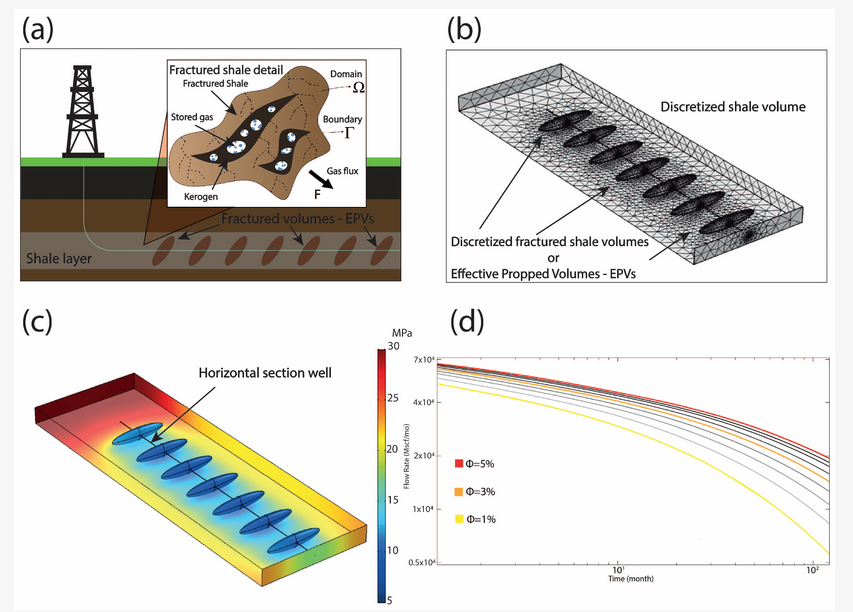
New paper in the journal Energies by ERL Professor Ruben Juanes, Research Affiliate Luis Cueto-Felgueroso, and collaborators: Optimization of Financial Indicators in Shale-Gas Wells Combining Numerical Decline Curve Analysis and Economic Data Analysis
https://www.mdpi.com/1996-1073/17/4/864
"We present a methodology to determine optimal financial parameters in shale-gas production, combining numerical simulation of decline curves and stochastic modeling of the gas price. The mathematical model of gas production considers free gas in the pore and the gas adsorbed in kerogen. The dependence of gas production on petrophysical parameters and stimulated permeability is quantified by solving the model equations in a 3D geometry representing a typical fractured shale well. We use Monte Carlo simulation to characterize the statistical properties of various common financial indicators of the investment in shale-gas. The analysis combines many realizations of the physical model, which explores the variability of porosity, induced permeability, and fracture geometry, with thousands of realizations of gas price trajectories. The evolution of gas prices is modeled using the bootstrapping statistical resampling technique to obtain a probability density function of the initial price, the drift, and the volatility of a geometric Brownian motion for the time evolution of gas price. We analyze the Net Present Value (NPV), Internal Rate of Return (IRR), and Discounted Payback Period (DPP) indicators. By computing the probability density function of each indicator, we characterize the statistical percentile of each value of the indicator. Alternatively, we can infer the value of the indicator for a given statistical percentile. By mapping these parametric combinations for different indicators, we can determine the parameters that maximize or minimize each of them. We show that, to achieve a profitable investment in shale-gas with high certainty, it is necessary to place the wells in extremely good locations in terms of geological parameters (porosity) and to have exceptional fracturing technology (geometry) and fracture permeability. These high demands in terms of petrophysical properties and hydrofracture engineering may explain the industry observation of “sweet spots”, that is, specific areas within shale-gas plays that tend to yield more profitable wells and where many operators concentrate their production. We shed light on the rational origin of this phenomenon: while shale formations are abundant, areas prone to having a multi-parameter combination that renders the well profitable are less common."